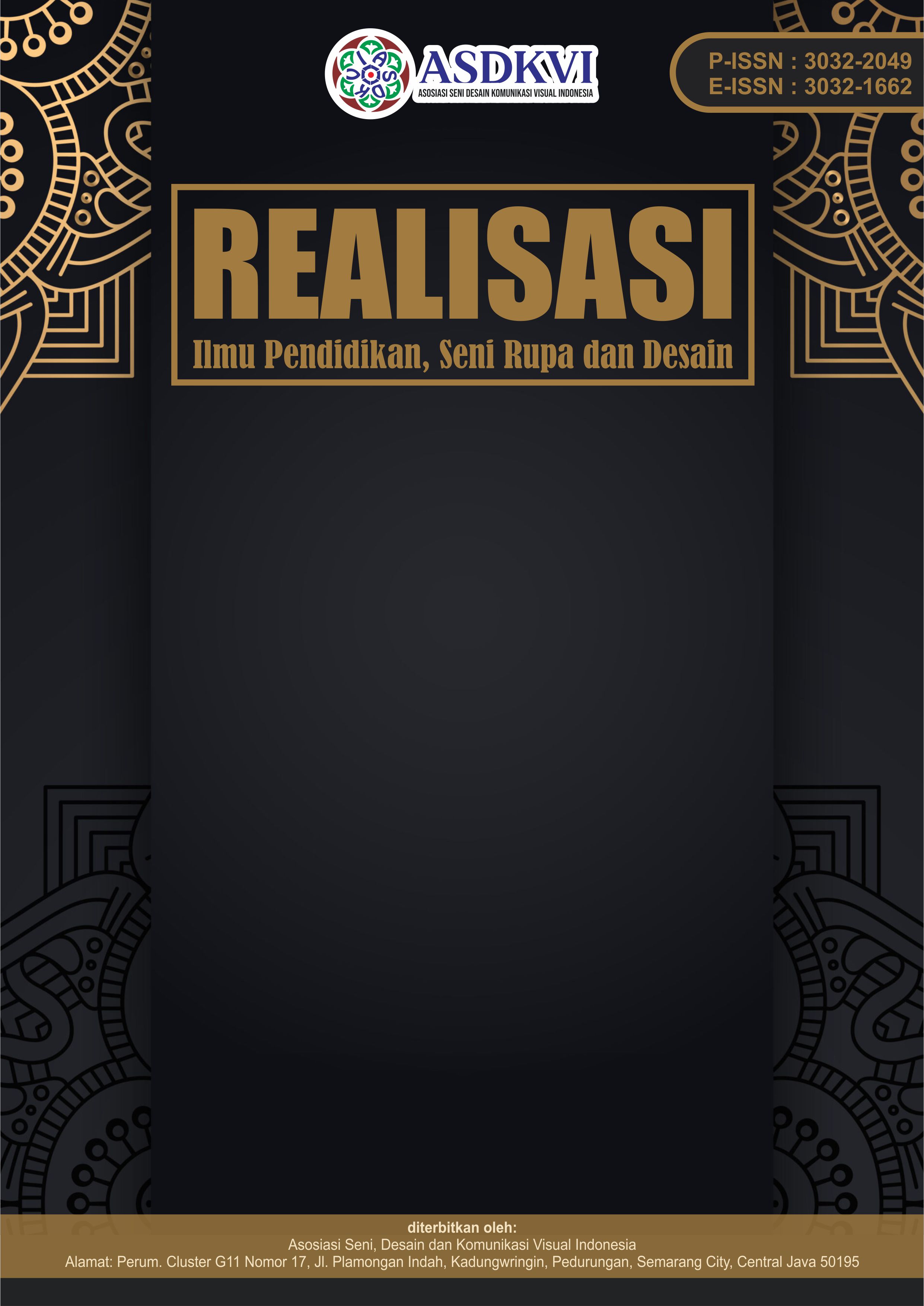Analisis Nilai Estetis dan Makna Simbolis pada Tugu Perjuangan Siborang di Kota Padang Sidempuan
DOI:
https://doi.org/10.62383/realisasi.v2i3.701Keywords:
Aesthetical Value, Monument, Symbolic MeaningAbstract
This research analyzes the aesthetic values and symbolic meanings of The Siborang Struggle Monument in Padang Sidempuan City. It aims to raise awareness among people who pass by the monument about the importance of remembering the services of heroes who fought tirelessly to defend Indonesia’s independence. The purpose of this research is to describe the aesthetic values based on Monroe Beardsley’s aesthetic theory and to uncover the symbolic meanings according to Langer’s symbol theory, as represented in The Siborang Struggle Monument. The research method employed is qualitative with a descriptive approach, using data collected through observation, interviews, and literature studies. The results show that The Siborang Struggle Monument holds significant aesthetic value through its unique local architectural form and conveys a strong symbolic meaning as a representation of bravery and sacrifice. This is reflected in the statue’s facial expression, which depicts a passionate fighting spirit while carrying war tools such as a sharpened bamboo spear with a flag, Molotov cocktails, and firearms, along with elegant color choices that carry implicit meanings. The study concludes that the monument not only serves as a commemorative structure but also stands as a symbol of national identity and pride. This research is expected to foster a spirit of patriotism and resilience in the younger generation and can serve as a reference for future studies on related topics.
References
Agustianto, A. (2011). Makna simbol dalam kebudayaan manusia. Ilmu Budaya, 8(1), 1–63.
Ernawati, dkk. (2008). Tata busana untuk SMK jilid 2. Jakarta: Direktorat Pembinaan Sekolah Menengah Kejuruan.
Hardani, dkk. (2020). Metode penelitian kualitatif & kuantitatif. Yogyakarta: Pustaka Ilmu.
Irawan, B., & Tamara, P. (2013). Dasar-dasar desain. Depok: Griya Kreasi.
Kartika, D. S. (2007). Estetika. Bandung: Rekayasa Sains.
Mesra. (2014). Menggambar bentuk 1. Medan: Unimed Press.
Moleong, L. J. (2019). Metodologi penelitian kualitatif. Bandung: PT Remaja Rosdakarya.
Patriansyah, M. (2020). Kajian strukturalisme dalam melahirkan sebuah karya seni. Besaung: Jurnal Seni Desain dan Budaya, 5(2), 59–64.
Patriansyah, M., & Sunaryo, A. (2018). Seni rupa Nusantara. Semarang: Dahara Prize.
Pattiasina, D. L. (2014). Kajian estetika dan realisme sosialis tiga patung monumen (Patung Selamat Datang, Pembebasan Irian Barat dan Dirgantara) era Soekarno di Jakarta. Widya, 2(1), 53–61.
Salsabila, F., & Purnomo, A. D. (2021). Relief pada interior Vihara Avalokitesvara. Patra, 3(2), 112–120.
Sanyoto, S. E. (2010). Nirmana: Elemen-elemen seni dan desain. Yogyakarta: Jalasutra.
Saragi, D. (2007). Dimensi simbolis patung primitif Batak menurut estetika Susanne Knauth Langer. Seni Rupa, 4(1), 87–97.
Sembiring, D. (2014). Wawasan seni. Medan: Unimed Press.
Yusuf, M. (2017). Metode penelitian: Kuantitatif, kualitatif, & penelitian gabungan. Jakarta: PT Fajar Interpratama Mandiri.
Zulkifli, Z., Sembiring, D., & Pasaribu, M. (2020). Tradisi dalam modernisasi seni lukis Sumatera Utara: Eksplorasi kreatif berbasis etnisitas Batak Toba. Mudra Jurnal Seni Budaya, 35(3), 352–359.
Downloads
Published
How to Cite
Issue
Section
License
Copyright (c) 2025 Realisasi : Ilmu Pendidikan, Seni Rupa dan Desain

This work is licensed under a Creative Commons Attribution-ShareAlike 4.0 International License.





